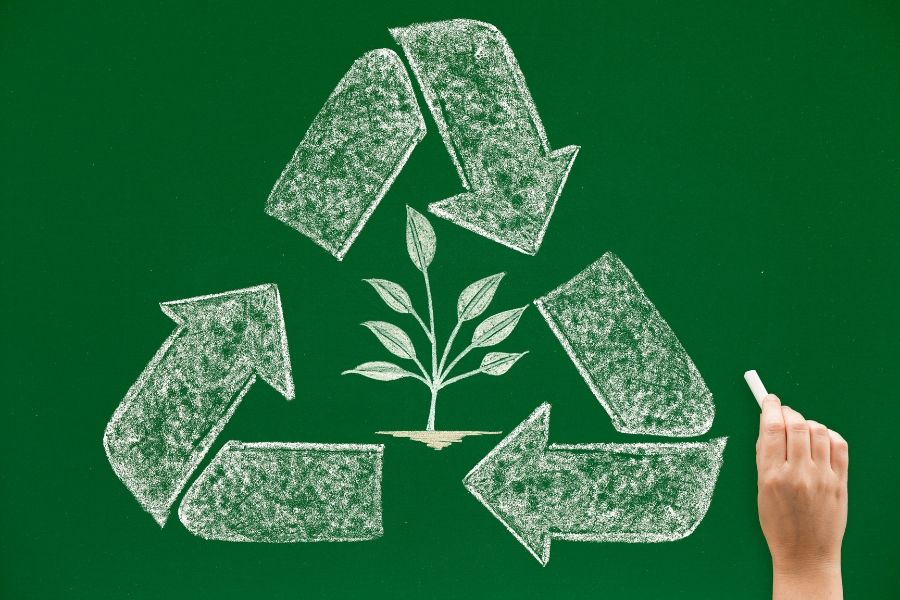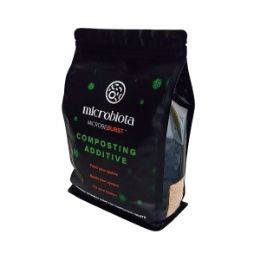
The composting process of a composting toilet is the same as that of any standard compost pile we're all familiar with.
Compost is achieved through microbiological activity where decomposition through digestion of organic matter leads to finer and finer residuals, ultimately creating soil. There are four things it needs to work:
- organic material (commonly defined as the carbon and nitrogen ratio)
- naturally occurring microorganisms
- aeration
- hydration
Basically, organic material goes into the composting chamber, and gets broken down by microorganisms. Aeration and hydration facilitate this process, and eventually you end up with humus.
In the case of a composting toilet, the process is aerobic. Your poos and pees, along with the carbon based bulking agent of your choice, make up the organic material of your compost pile. Naturally occurring microorganisms are present in the organic material to begin with, but can also be added in the form of microbes to kick-start and accelerate the composting process. Aeration is achieved by ventilation, and hydration comes from the liquids in your poos and pees. Humans make more liquid than is necessary for a healthy compost pile, but this is accounted for in compost toilet design, which control moisture levels through evaporation and/or drainage.
Organic Materials That Go Into a Composting Toilet
It's simple - the only organic materials going into your composting toilet should be:
- Bodily fluids (poos, pees, vomit)
- Bulking agents (wood shavings, hemp hurd, coco peat, peat moss, etc.)
- If available on the property, you can also use onsite compost browns for the ultimate sustainability model (dry leaves, hay, straw, etc.)
- Microbes
We don't recommend addition of any other materials to the pile. Never add newspaper to your compost, as it is full of toxic inks. We also don't recommend addition of vegetable peelings as these can attract flies. If you wish to compost such materials, stick to a separate kitchen waste compost bin where no human pathogens are present.
The Microorganisms in Your Compost
Bacteria
The most abundant creatures in your compost pile are mesophilic and thermophilic bacteria. These guys break down organic matter in your pile and raise its temperature. Mesophilic bacteria like moderate temperatures between 20-45°C, and can be found in cheese, yoghurt, beer and wine making processes, and are also present on our skin, in our mucus, and in our gastrointestinal tracts.Thermophilic bacteria prefer higher temperatures of 41-122°C, and can be found in extreme environments such as hot springs and deep sea hydrothermal vents.
Actinobacteria
Actinobacteria inhabit diverse environments, spanning from soil to water, and play a crucial role in organic matter decomposition. These guys are particularly good at breaking down tough cellulose and lignin elements found in wood and paper, and they also help regulate the overall health of your compost pile.
Fungi
Fungi are great at breaking down larger and more complex organic molecules to their simplest parts. They help decompose fats, carbs, and proteins.
The Four Stages of the Composting Process
Stage 1 - The Mesophilic Phase (Addresses Human Pathogens)
In this first stage, carbon is combined with oxygen to create energy, which in turn creates heat and food for mesophilic bacteria to reproduce. As numbers of mesophiles grow, the temperature inside your compost pile starts to rise, bring it into the thermophilic phase.
Stage 2: The Thermophilic Phase (Addresses Human Pathogens)
Once the compost pile's heated up, thermaphiles begin their work. Most of your human waste will break down during this stage.
Stage 3 - The Cooling Phase (Stabilizes Bacteria Ecology)
Eventually, the pile begins to cool down again. All the little critters that were chased away by heat and thermophiles, make their way back to the pile and start decomposing the larger, more complex elements within. Actinobacteria and fungi come in and break everything down even further.
Stage 4 - The Curing Phase (Stabilizes Bacteria Ecology)
Often referred to as maturation, the curing phase is the "good wine" phase. It is when the compost matures, stabilizing bacteria ecology and reducing any final risks of exposure to dangerous bacteria.
Need help choosing a system? Call WCTNZ® on 0800 022 027 for free advice on system specification and setup. Advanced design consultancy services are also available.
WCTNZ® | Waterless Composting Toilets NZ Limited | Copyright 2024 ©















